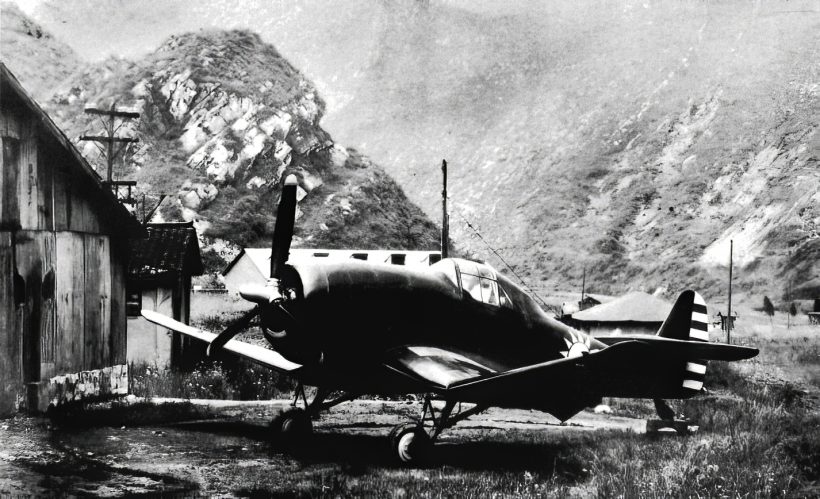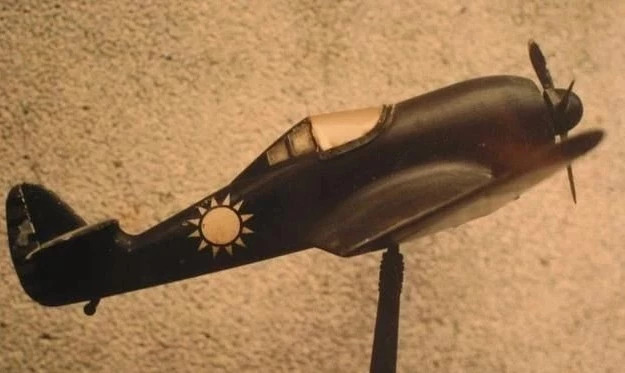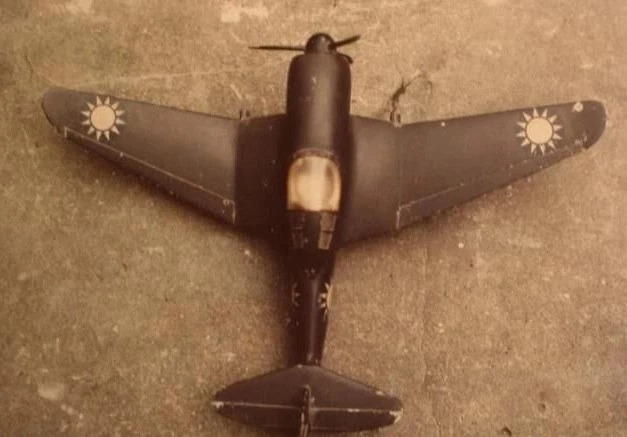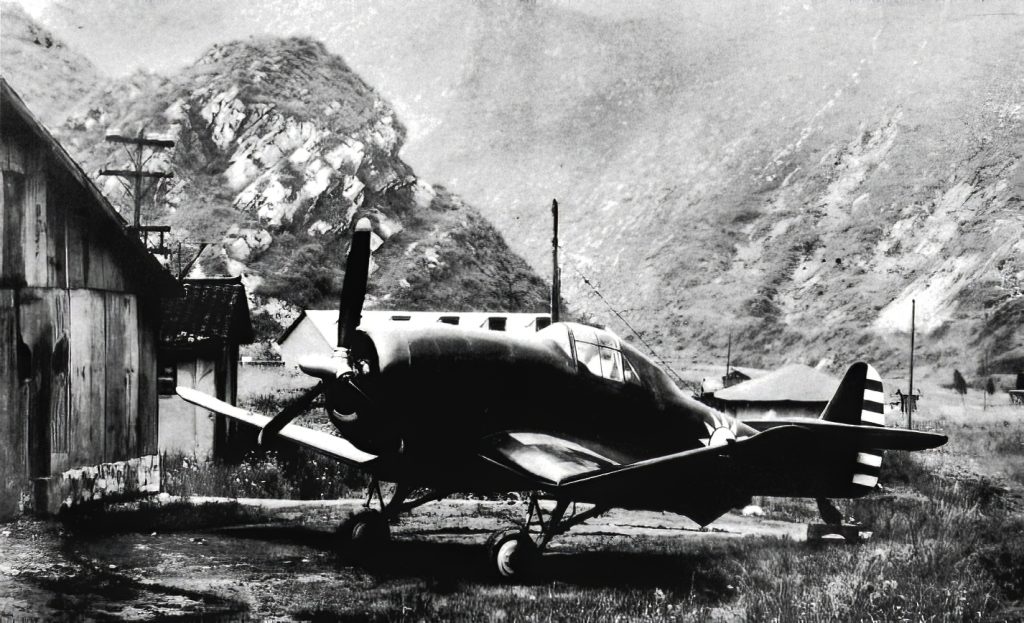
The armies of the Republic of China endured constant Japanese aerial superiority throughout the Second Sino-Japanese War, being unable to combat Japanese aircraft with their small air force composed mostly of imported aircraft from foreign nations. Though having indigenously developed aircraft projects throughout the war, the majority of these were unable to be serviced or mass produced on account of technical inferiority or insufficient funding. Thus, the Nationalist Chinese had to depend greatly on foreign aid or purchases. One of the indigenous aircraft developed during the war was the XP-1, a fighter design utilizing the unique forward-swept gull-wing configuration. The XP-1 is perhaps one of the most interesting, if not obscure, Chinese designs of the war. Interviews with former workers in China’s wartime aviation industry by aviation historians reveal very little about the specifics in the XP-1’s development. In addition, there is a severe lack of contemporary primary documentation about the aircraft. However, these interviews and subsequent publications were able to reveal a general story of the XP-1, and provided valuable information which has since been republished in a variety of modern literature. Following a long and troublesome development period, a total of two prototypes were produced, but the project was cancelled soon after the aircraft crashed on its maiden flight.
Development History
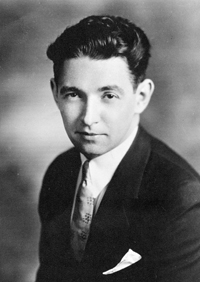
In early 1942, the Aeronautical Research Institute and the 1st Air Force Aircraft Manufacturing Factory (1st AFAMF) had decided to initiate an indigenous fighter design. This was an effort to reduce the reliance on foreign aid, as well as to provide the air force with competitive fighters to combat the Japanese. At that time, the majority of modern fighters in Chinese service were American-supplied, such as the Curtiss H-81-A3. A small design team was assembled, including Deputy Chief Engineer Constantine L. Zakhartchenko, an American-Russian émigré and graduate of the Massachusetts Institute of Technology in aviation design as the design lead. Zakhartchenko was one of the oldest designers in the 1st AFAMF, contracted to work for them since 1935. Zakhartchenko envisioned the design of a fighter aircraft utilizing a forward-swept gull-wing design while maintaining a minimum performance requirement set by the Aeronautical Research Institute. Unfortunately, most of the specific requirements set for Zakhartchenko are unknown, but they allegedly called for the aircraft to reach a top speed of at least 580 km/h (360 mph). The aircraft was given the Chinese designation of 「研驅一式」, meaning “Experimental Drive One” and the English designation of “XP-1”, which imitated the American USAAC / USAAF designation system denoting that this aircraft was an experimental (“X”) pursuit (“P”) aircraft. Curiously, a few Western sources suggest that the project was given the initial designation of “D-2” and changed to “XP-1” later, though this is not mentioned or supported by Chinese sources.
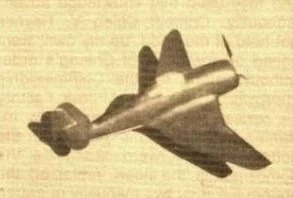
By the end of 1942, Japanese advances in Burma had forced the 1st AFAMF to relocate for safety. The new factory grounds were at Guiyang, Guizhou province. Simultaneously, on January 9th 1943, Zakhartchenko’s contract with the 1st AFAMF had expired. Though there was no intent for a contract renewal, Zakhartchenko, while technically no longer employed by the 1st AFAMF, voluntarily stayed behind in Guiyang to continue assisting the team with the XP-1 design. Zakhartchenko finally left China in June and returned to the United States to work for the McDonnell Aircraft Corporation. The departure of Zakhartchenko indubitably cost the team a valuable and experienced designer. Under Zakhartchenko, the preliminary and general design of the XP-1 was completed, but the team had yet to perform any major detailed design for the aircraft. The 1st AFAMF appointed Lei Zhaohong (雷兆鴻) as the new project lead, and the overall design was completed soon after.
Design
The XP-1 was a conventional one-seat single-engine fighter aircraft which incorporated a unique forward-swept gull-wing design. The forward and middle fuselage along with the wing spars were constructed out of 4130 chromium-molybdenum steel. The wings and rear fuselage (including the tail section, rudder, and elevator) were constructed out of a mixture of aircraft fabric and a special type of laminated wood material developed by the Aeronautical Research Institute. The mating of the metal-based middle fuselage and wooden-based rear fuselage was done by torsionally joining four bolts together. The XP-1’s control surfaces were constructed out of metal ropes, which connected from the forward fuselage (where the canopy was) to the tail, where it connected with the rudder and elevators. While not explicitly proven, it is likely that the XP-1 took inspiration from Western aircraft design. For example, the forward fuselage of the XP-1 bears somewhat of a resemblance to the American Republic P-43 Lancer or P-47 Thunderbolt designs, while the tail bears a resemblance to that of the Curtiss-Wright CW-21 Demon. The XP-1 was powered by a single Wright Aeronautical SGR-1820 Cyclone radial engine capable of producing 710 hp (529 kW) paired with a three-blade propeller. The XP-1 also had to meet the requirement of at least 580 km/h (360 mph) set by the Aeronautical Research Institute
The cockpit gauges and instruments intended to be used were of American origin, while the cockpit canopy was American-based but modified. The canopy appears to be very similar visually to the ones used on the American Curtiss P-36 Hawk or Curtiss P-40 Warhawk. Both aircraft were used by China, and it is likely that the canopy was just taken from part stockpiles. The XP-1’s landing gears would have been able to be retracted or extended using a hydraulic system. Through examining photographic evidence, it appears that the XP-1’s landing gear was also of American-origin due to the similarity between it and existing American types. The XP-1 would have also had navigation lights installed on the left and right wings.
Unfortunately, the intended armament for the XP-1 is a mystery. Interviews with former workers of China’s wartime aviation industry revealed no information regarding the XP-1’s armaments, but it can be confirmed that the prototypes were unarmed through photographic evidence. Seemingly, no Chinese sources make an attempt to discuss specific armament setups, but Western internet sources suggest that the XP-1 would have likely had the Danish 20 mm Madsen cannon, French Hispano-Suiza HS.404 20 mm cannon, or the American 12.7 mm Browning AN/M2 machine gun. It should be noted that there is no supporting evidence to substantiate these claims. However, in a magazine article written by Aerospace Industrial Development Corporation engineer and aviation historian Li Shizhang (李適彰, also known as Mike Lee), it was passively implied that the XP-1 would have had machine guns. The most common type of machine gun available in China at the time for aircraft use was the American 12.7 mm Browning AN/M2. It is also a possibility that a set armament was not even considered yet, as the team needed to validate and obtain flight characteristics of the XP-1 before making further modifications.
Construction of the First Prototype
Following the completion of the XP-1’s design, the 1st AFAMF immediately began building the prototype. The construction of the prototype took place in Guiyang, while the raw materials required for the XP-1 prototype were provided by the Aeronautical Research Institute in Chengdu, the Aeronautical Research Institute’s Plywood Manufacturing Plant in Chengdu, and the Aeronautical Research Institute’s Aircraft Fabric Manufacturing Plant in Longyang, 180 km (111 mi) southeast of Chengdu. One of the problems the factory had while constructing the prototype was locating an engine. The XP-1 was designed with a Wright Aeronautical SGR-1820 Cyclone radial engine capable of producing 710 hp (529 kW), but this specific engine type was scarce due to what can be assumed to be prioritization for serviced Lend-Lease fighters. The team had originally requested the allocation of two engines, but this order went unfulfilled. However, the factory was able to locate an engine from a crashed Douglas C-47 Skytrain. The engine was repaired, with the 2nd AFAMF being requested to rebuild the propellers. The engine hood consisted of four metal pieces constructed from c. It was heat treated to T-6 standard and manually shaped to match the XP-1’s forward fuselage.
Unfortunately, the team ran into more problems when it was discovered that the construction of the XP-1’s design had resulted in some unfavorable characteristics. Once the engine was mounted, it was found that the XP-1 prototype was too nose-heavy, which required the team to place counterweights in the aircraft’s rear fuselage in order to maintain the aircraft’s center of gravity. This increase of weight had caused the aircraft to go overweight, which impacted the aircraft’s performance. The design team estimated that the increase of weight would cost the XP-1 the ability to reach at least 580 km/h (360 mph). Nonetheless, the first XP-1 prototype was completed in the summer of 1944. Construction also began on a second prototype, intended to be completed in the fall of that same year if all went according to plan. The completed first prototype was painted in standard Chinese olive-green camouflage and had the Republic of China Air Force roundel painted on both sides of the rear fuselage, as well as under each wing. A horizontal blue and white stripe pattern was also applied to the rudder. As the first prototype’s purpose was solely to validate the design and obtain flight characteristics for the design team, the prototype was not given any serial or tactical numbers. The prototype also did not have navigation lights, and the landing gear’s hydraulic extension and retraction system was not installed. Any armament or weight placeholders for them were also not installed. Most strangely of all, the prototype also lacked a radio communication system.
The XP-2
At some point of the XP-1’s development, the design team had designed a variant of the XP-1 designated the “XP-2”「研驅二式」. Details and differences of this variant compared to the XP-1 are unknown, but certain sources suggest that it saw a change in power-plant. Rather than the original Wright Aeronautical SGR-1820 Cyclone radial engine, the XP-2 was alleged to have an unspecified “Wasp” model engine capable of producing 825 hp (615 kW). Other sources suggest that the engine would be the same, and the majority of modifications would be done to the airframe.
The Tragic Maiden Flight
Though the first XP-1 prototype was completed in the summer of 1944, the aircraft was unable to enter flight testing right away. The start of Operation Ichi-Go by Japanese forces in April took a heavy toll on China’s fighting forces within the following months, as Japan tried to push deeper into Chinese land. The increase in Japanese aerial attacks with the operation made it unsafe for the XP-1 to fly. Despite the setback, all the planning had been completed for the initial flight. The test pilot chosen to fly the prototype was Tan Shou (譚壽), an experienced fighter pilot who previously served in the Guangdong Provincial Air Force under Chen Jitang. Tan was born in Taishan, Guangdong and had moved to the United States where he became a pilot. In Minguo Year 16 (1927), Tan returned to China and joined the ranks of the Guangdong Provincial Air Force. Tan was assigned as the 1st AFAMF’s test pilot and was on standby to perform the XP-1’s maiden flight.
It would not be until January 1945 that it was determined to be safe enough for the XP-1 to perform its maiden flight. The XP-1 was scheduled to perform its maiden flight at the Guiyang Nanmen Airfield, next to the 1st AFAMF office buildings. Nanmen Airfield was a rather simple airfield, having an unpaved dirt runway which faced North and South. To support the XP-1 in its takeoff, the airfield staff had created an aircraft ramp out of cement and placed it near the end of the runway. On January 18th, the XP-1 finally performed its maiden flight. The day was sunny, and conditions were prime to perform a flight test. Around a dozen or so spectators were invited to watch the flight test, likely consisting of airfield personnel and members of the design team. Contrary to most maiden flights, the team did not host any celebratory event. The flight test was to be conducted in a relatively low-profile manner, without any tea parties or ribbon cutting ceremonies. No important government or air force personnel were invited. Tan Shou had prepared for the flight, wearing some of his best flight gear. According to oral testimonies, Tan wore a magnificent yellow leather flight jacket with fur collars, paired with a leather flight cap, aviation goggles, flight gloves, and a white scarf. His pants and shoes however, were regular civilian grade. To ensure his safety, Tan had also worn a seat-type parachute.
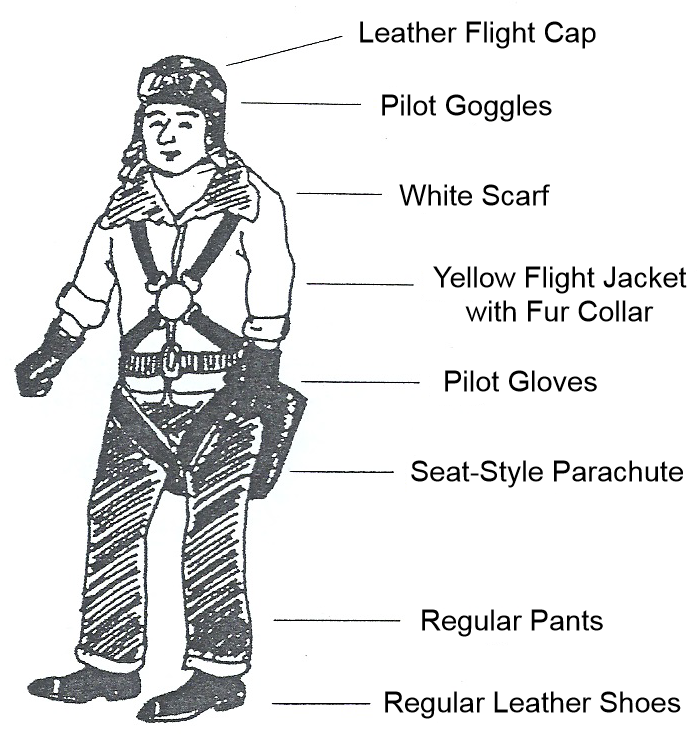
At around 10:00 AM, Tan got in the XP-1 prototype and began the actual flight. The XP-1 was positioned at the northern end of the airstip, and Tan taxied the aircraft to the southern end, where it performed a 180° turn to face the north side it was to take off towards. The aircraft accelerated, reaching around 500 m (1,640 ft) along the airfield, met the cement ramp, and took off. The successful takeoff of the XP-1 incited cheering from the spectators, seeing that the aircraft was indeed able to take off. However, their celebration would soon be cut short. Once reaching an altitude of approximately 450 m (1,476 ft) Tan banked the aircraft to the left. The maneuver was successfully performed given the aircraft’s high speed after takeoff. However, after a short time, a second turn was performed, which was also completed, but the aircraft displayed wobbling instability. Once over the Chaoyang Dongshan residential district, Tan began to perform more basic aerobatic maneuvers. Attempting to pull the nose up, the XP-1 failed to climb. After flying level to gain more speed, Tan attempted to perform the same maneuver, but failed again. It was here that Tan seemingly decided to land, as the XP-1 had exhibited very concerning aerodynamics, being unable to perform a simple pull-up. Turning to return to the airfield, the XP-1 suffered from a fatal accident. When Tan performed his third banking maneuver, the XP-1 stalled and began to enter a flatspin. Tan was not seen to have bailed from the aircraft, possibly due to the low altitude or an attempt to regain control. The XP-1 crashed into the southwest corner of the airfield near the Dongbianmen residential district, in an area concealed by trees and buildings. When the support staff arrived at the crash site, it was revealed that Tan had died instantly. Although damaging assets and buildings, the crash had not injured anyone else. Due to the fact that no radio was installed, the design team was unfortunately unable to contact Tan during the incident and understand the crash better.
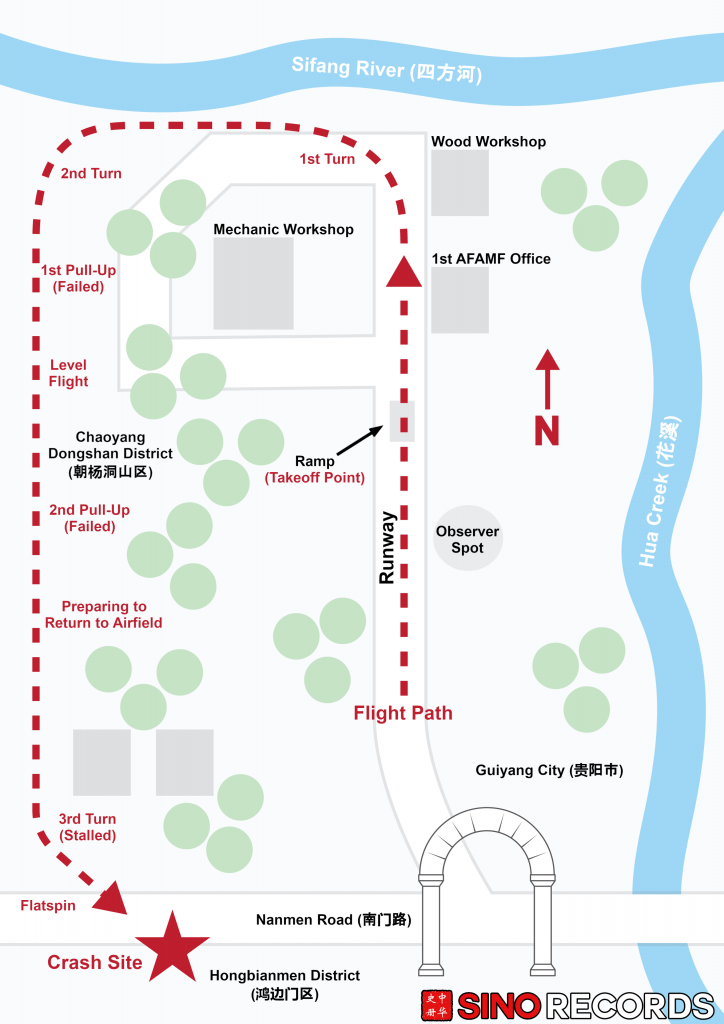
Investigating the Crash & Second Prototype
The XP-1’s crash and Tan’s death had dealt a huge blow to the morale of the design team. In order to investigate possible causes for the crash, the second prototype (which was still in construction) was quickly completed for the purpose of evaluation. Following the orders of the Aeronautical Research Institute, the XP-1’s technical drawings and reports were sent to various research facilities for evaluation. The data was sent to the Department of Aviation in Chongqing Central University as well as the Institute of Aeronautics in Chengdu. Chongqing Central University suggested that the XP-1 design suffered from great instability, and should not have been test flown in the first place. The Chengdu Institute of Aeronautics did not provide a response. The Central University’s analysis was refuted by the design team, who insisted that the construction and design was stable as per their calculations. Their rebuttal was that the engine was to blame, seeing how it was taken from a crashed C-47 Skytrain and likely suffered from age and damages caused by the crash.
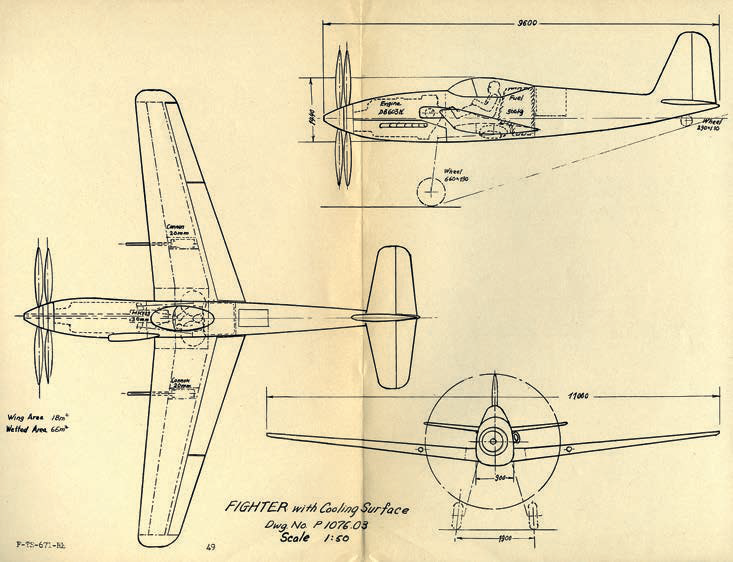
Nonetheless, work was no longer pursued on the XP-1, as the design was already three years old. The Republic of China Air Force already had an abundance of more modern fighters available for combat, such as the North American P-51 Mustang or Republic P-47 Thunderbolt provided from the Lend-Lease program. The end of the project also included the cancellation of work on the XP-2, which was still in the preliminary design and research phase. As for the second completed XP-1 prototype, the aircraft in its entirety was gifted to the University of Guizhou for students to study. The ultimate fate of the aircraft is unknown, and it most likely does not survive to this day. If the XP-1 design truly suffered from an inherent instability, it is unknown if Zakhartchenko was to blame or Lei. The Chinese had never experimented or implemented a design of this sophistication, using forward sweep and gull wings simultaneously. This type of design likely would have needed more research work put into for it to be functional, especially in 1942. Though not completely alike, the German Heinkel Flugzeugwerke firm also experimented with a forward swept fighter design named the P.1076, based off of the firm’s earlier He 100 design. This project did not progress beyond the design phase. The United States had also experimented with a forward swept design for the P-51 Mustang, but this too was never adopted.
Analysis on Sourcing
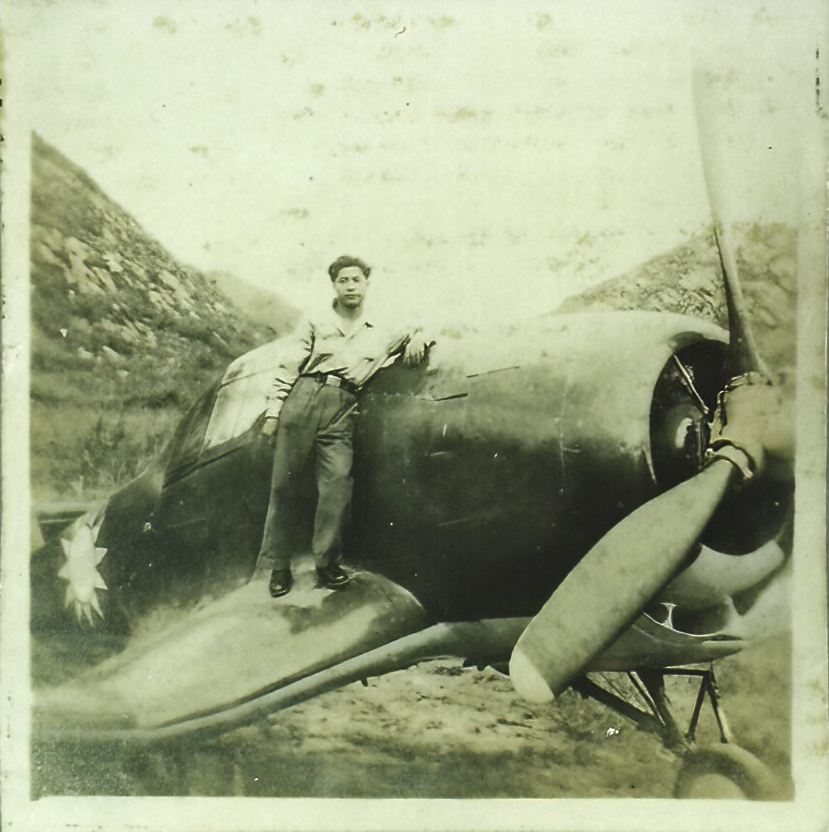
In a case similar to most aircraft designed in this period, little to no contemporary documentation or otherwise primary information survives on the aircraft. However, three of the four major designers of the XP-1 (including project lead Lei Zhaohong) are known to have fled to Taiwan upon the conclusion of the Chinese Civil War. As of 2009, two of three designers had passed away, but Lei was still alive. Though an interview was attempted by historian and engineer Li Shizhang, little information was obtained, as Lei was at an advanced age and his heavy accent made his speech incomprehensible, despite his son’s attempts at translating. Other than Lei, Li had also had the opportunity to interview several other former members of China’s aviation industry regarding the XP-1. For example, Li had interviewed Li Jiaqiao (李家騵), the former director of the First Jieshou Aviation Factory (介壽一廠) who was around during the time the XP-1 was constructed. Li Jiaqiao recalled hearing about a new type of aircraft being developed in Guiyang that was cancelled following the crash of the prototype. Subsequent interviews with others also revealed little about the aircraft, though a former Guangdong Air Force captain was able to sketch out the aircraft for Li. Unfortunately, he did not know much about the aircraft and believed it was a variant of the 1st AFAMF’s XP-0 fighter, which was a completely separate fighter design. Fortunately, Li was able to meet Lu Bingxiang (卢炳祥), a graduate of the 1st AFAMF’s apprenticeship class and one of the builders for the XP-1, who was one of the few witnesses present on its maiden flight. In good health and mind, Lu was able to provide a general summary of the XP-1’s developmental history along with a rare and valuable photo of the XP-1 prototype. It is a forward shot of the XP-1 with Huang Lin (黄麟), a classmate of Lu, on the right wing. Though only showing the forward nose section of the XP-1, it provides invaluable insight to the XP-1’s nose design as well as proving the lack of armaments installed. Only two photos are known to exist of the XP-1.
Conclusion
Although the XP-1’s design team had attempted to utilize an innovative forward-swept gull-wing design, the XP-1 ultimately failed, likely due to the aircraft’s unstable design. Despite its failures, the XP-1 can be considered one of China’s most unique and ambitious fighter designs to originate from the Second Sino-Japanese War. Due to the relatively long design process of the XP-1, it likely would have been an ineffective front-line fighter even if it did successfully complete flight trials. Compared to the contemporary P-51D Mustang fighter, the Mustang’s maximum engine output was nearly three times as much as the XP-1’s, and the cruising speed would have been equal to the XP-1’s maximum speed. Still, the XP-1 was an honest indigenous attempt to design an innovative fighter to combat the Japanese.

Afterword
I would like to sincerely thank Mr. Clarence Jing-ping Fu for his help in this article. Through his correspondence, he was able to send me invaluable scans of old articles published by Li Shizhang (李適彰 / Mike Lee) and a photo of the XP-1.

